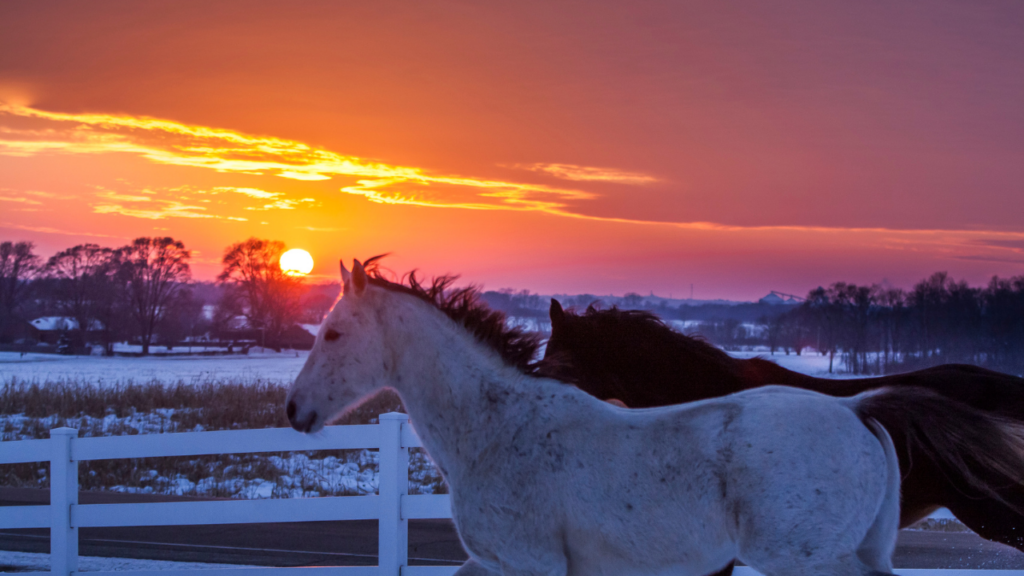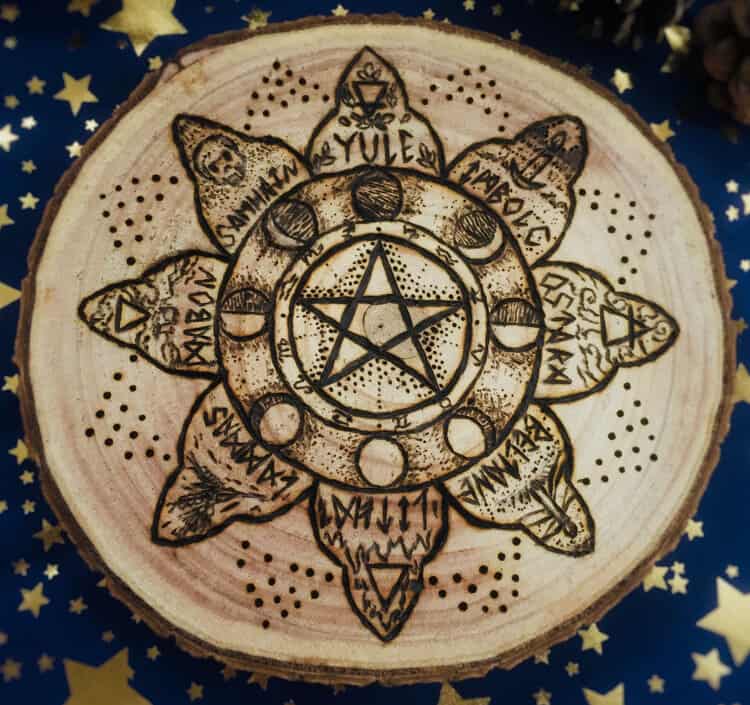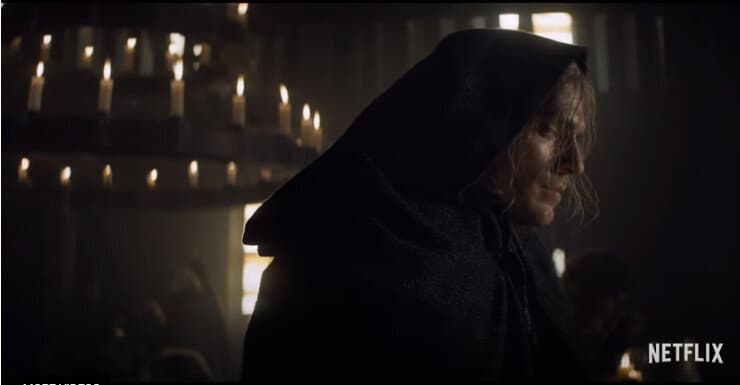As the year wanes, culminating in the shortest day and the longest night, the Winter Solstice invites us into a time of deep reflection and renewal. From a pagan witch’s perspective, this celestial event is not just a marker of seasonal change but an intense spiritual milestone. Let us journey together into the heart of winter’s embrace to uncover the mysteries of the Winter Solstice. In this article we will explore ancient traditions, symbols, and rituals that continue to inspire all those who walk the spiritual pagan path.
Understanding the Winter Solstice
The Winter Solstice marks a pivotal point in the Earth’s journey around the sun, characterized by the moment when the North Pole is angled furthest away from the sun, leading to the shortest day and the longest night of the calendar year in the Northern Hemisphere. This occurs around December 21st, and this astronomical event signals the beginning of winter, a period rich with symbolism and significance for many of us. For those who do follow the pagan path, the Winter Solstice transcends its physical manifestations to embody a deeper spiritual essence unique to each and everyone of us.
The winter solstice represents the rebirth of the sun, a phenomenon celebrated as a promise of new light and the emergence of life from the dark and seemingly barren embrace of winter. This time of the year invites us to reflect on the inherent cycles of nature. It is a time that encourages us to acknowledge and gain an appreciation for the balance between light and darkness and the impermanent nature of all things (including ourselves). The spiritual dimensions of the Winter Solstice serve as a reminder of the ever-present potential for renewal and transformation that exists within the natural world and, by extension, within ourselves.
Historical Significance of the Solstice in Pagan Traditions
The Winter Solstice has long been a time of significant celebration across many ancient cultures, each observing it through the lens of their unique spiritual and societal traditions. The Romans paid homage to Saturn, the god of harvest and agriculture, with the vibrant festival of Saturnalia, an event marked by revelry and the upturning of social norms. In the cold north, the Norse commemorated Yule, where festivities centered around the burning of a special log and signified the welcoming of the returning light. Meanwhile, the Druids, deeply attuned to the rhythms of the natural world, celebrated Alban Arthan, heralding the rebirth of the sun with great reverence.
These various observances underscore the significance of the Winter Solstice’s universal appeal and its capacity to unite communities in celebration of the enduring cycle of death and rebirth. Despite the diverse ways in which it is honored, a common thread among world traditions is the recognition of the Winter Solstice as a critical turning point of the year—a moment when the darkness begins to wane, and the light starts its slow ascent back into dominance.
This acknowledgment of the natural order highlights the deep connection our ancestors felt with the celestial cycles and their reliance on these natural rhythms to guide their spiritual and agricultural lives. I feel in our modern times that this can be easily lost and that we must make an effort to keep our traditions alive. We can do this by reading about the winter solstice and what our ancestors did to connect with the Earth at this time and do the same in honor of them.
Symbols and Traditions of the Winter Solstice
The Winter Solstice is imbued with a rich tapestry of symbols and traditions that carry deep meanings for those who celebrate. Evergreens stand as a vibrant testament to life’s persistence, symbolizing the eternal cycle of growth and renewal that continues even through the coldest, darkest times.
The Yule log, a substantial piece of wood from either an oak or ash tree, is ceremonially burned to herald warmth, light, and protection during the longest night, casting a glow of hope for the year ahead. Additionally, holly, ivy, and mistletoe are woven into Solstice observances, each plant bearing its own symbolism—holly for protection and ivy for connection and continuity, while mistletoe represents peace, love, and healing, embodying the spirit of reconciliation and unity.
These elements are often incorporated into Solstice rituals and home decorations, creating a sacred space that resonates with the season’s energy. Through these symbols and traditions, the essence of the Winter Solstice is vividly expressed, inviting individuals to reflect on the enduring rhythms of nature and the perpetual promise of light’s return.
Rituals and Practices for the Modern Pagan Witch
In today’s world, the ways in which a modern pagan witch observes the Winter Solstice are as varied as the individuals themselves. Many engage in practices that weave together ancient traditions with contemporary life, creating personalized rituals that resonate with their spiritual path. Lighting candles to symbolize the return of the sun is a common practice, as is the creation of a Yule altar, which might be adorned with seasonal greenery, sun symbols, crystals, and other items that hold personal significance. Meditation plays a key role, offering a quiet moment to reflect on the past year and the renewal ahead.
For those who prefer a communal celebration, the Solstice may involve participating in or organizing a group ritual. This could include drumming, chanting, and dancing around a bonfire, a modern echo of ancient celebrations that welcomed back the light. The exchange of handmade gifts or blessings can strengthen bonds within the community, serving as a tangible reminder of the support and love shared among its members.
Witchcraft today also embraces the power of intention-setting. The longest night offers a potent time for casting spells or performing rituals that focus on letting go of the old and welcoming the new. Whether through solitary practices or communal ceremonies, modern pagan witches find meaningful ways to honor the rebirth of the sun and the infinite cycle of life, death, and rebirth that the Winter Solstice symbolizes.
The Deeper Spiritual Meaning of the Winter Solstice
The Winter Solstice transcends its astronomical significance, diving into realms of profound spiritual depth. It stands as a potent symbol of the interplay between shadow and light, encapsulating the universal truths of existence. This cyclical event teaches us the importance of embracing darkness, not as an adversary, but as a necessary precursor to light and growth. It is a period that beckons us to confront our inner shadows, offering a chance to shed what no longer serves us and prepare for the rebirth that follows.
The stillness of the longest night encourages deep introspection, allowing us to tap into our inner wisdom and the collective unconscious. This introspection paves the way for spiritual awakening and renewal, as we are reminded of our resilience and the impermanence of all states. Through the lens of paganism, the Solstice is seen as a moment of rebirth, not only of the physical sun but also of the spiritual self. It symbolizes the eternal cycle of decline and resurgence, inviting us to reflect on our personal cycles of growth and transformation.
This time of year is a call to balance, urging us to harmonize our inner darkness with the emerging light, fostering a deeper understanding of the interconnectedness of all things and our place within this delicate equilibrium.
Winter Solstice Reflections and Personal Growth
The Winter Solstice serves as a powerful catalyst for introspection, urging us to turn inward and evaluate our personal journey over the past year. This time of deep darkness before the return of the light is ideal for pagans to engage in thoughtful reflection, acknowledging both the triumphs and trials that have marked the year’s passage. It is a moment to celebrate growth, learn from the obstacles faced, and set intentions for the upcoming cycle.
Many utilize this period for journaling, a practice that allows for the externalization of thoughts and feelings, facilitating a clearer understanding of one’s path and progress. Vision boarding, another enriching activity, offers a creative outlet to visualize future aspirations, harnessing the potent energy of the Solstice to manifest these desires into reality. Tarot readings can also provide insightful guidance during this time, offering a reflective mirror to examine one’s inner landscape and potential future directions.
Through these practices, pagans find a structured means to embrace the transformational energy of the Winter Solstice, fostering personal growth and preparing the soul for the rejuvenating light to come.
Embracing the Winter Solstice in Everyday Life
Integrating the essence of the Winter Solstice into our daily routines can enhance our connection to the cycles of nature and the intense spirituality that this season embodies. Simple yet meaningful actions can serve as reminders of this connection and the lessons it brings. For instance, the act of lighting a candle each evening can be a meditative practice, symbolizing the return of the light and the hope that comes with it. Taking walks in the crisp winter air allows us to witness the stark beauty of the season, fostering a deeper appreciation for the Earth’s rhythms.
Incorporating mindfulness practices into our day, such as pausing to savor a warm cup of tea or spending a few moments in silent reflection, can help us cultivate gratitude and presence, drawing us closer to the core values of the Solstice. Creating space for gratitude, by perhaps keeping a gratitude journal, can make us more aware of the blessings in our lives, aligning with the season’s themes of renewal and rebirth.
These everyday acts, rooted in pagan traditions, invite a sense of serenity and alignment with the natural world, enriching our spiritual journey through the winter months and beyond. By welcoming these practices, we weave the magic and mysticism of the Winter Solstice into the fabric of our daily lives, nurturing our connection to the Earth and its cycles.











